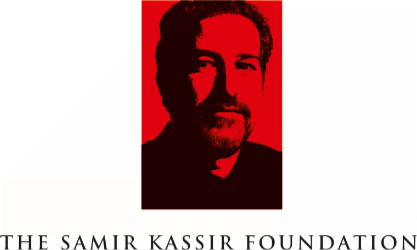Economy
Lebanon is a free-market economy, characterized by a strong laissez-faire tradition and unrestricted foreign investment. It also has the third highest debt-to-GDP ratio in the world, with most of the debt held internally by Lebanese banks.
Mostly service-oriented, the Lebanese economy relies mainly on the banking and tourism sectors as well as on international business relations. In 2017, the import of goods and services constituted 46% of the GDP, almost twice as much as exports (24%). Expatriate remittances account for around a fifth of the economy, rendering it highly vulnerable to regional crises and local political tension.
Scarce advertising revenues
The Lebanese media industry is small, though fragmented and overcrowded with more than 130 media outlets in total (37 TV stations, 10 newspapers, 35 radio stations – 20 of those focused on politics and 15 merely on entertainment – and no less than 50 websites) serving about 6 million inhabitants. Revenues from sales and advertisement are extremely limited and thus not able to sustain the plethora of media outlets operating in the country.
It is estimated that the entire advertisement market weighs between USD 100 million and USD 180 million annually. About half of it is going to the television industry, with further deductions due to agency and representative fees. This is clearly too little to sustain the country’s media operations, particularly the nine main television networks included in this study, which typically require at least USD 10-15 million a year to run. In economic terms, the Lebanese market might in fact be large enough only for the two highest-ranked TV networks. Similarly, it is also estimated that no newspaper sells more than 8,000 to 9,000 copies per day, which does not supply sufficient advertising revenues to pay for employees, headquarters, and operating expenses.
Moreover, political instability and recurrent crises are a frequently occurring feature of the Lebanese market, which makes advertisers reluctant to spend large sums
As such, media outlets have to turn to other sources of funding. Subsidies in exchange for favorable reporting are considered necessary and politically motivated funding for newspapers and journalists is commonly accepted as normal behavior. It is even justified by some on account of the poor salaries and lack of benefits available to journalists.
Political funding of media
Because of the sectarian and politicized nature of Lebanon and its media, the various media institutions tend to focus exclusively on issues relevant to a particular religious sect or political group rather than on those relevant to the larger Lebanese society. Furthermore, the total population of Lebanon is in itself too small to allow for the financial self-sufficiency of the 110 licensed political periodicals and the myriad of radio and television stations. Given the lack of financial self-sufficiency and the low salaries of the average journalist and employee in these companies, media professionals and institutions have no choice than to seek outside subsidies in order to survive – and thus become subject to the interests tied to these sources of funding.
The most common subsidies come from domestic and foreign, sectarian or political entities in exchange for editorial support. Foreign and business interests have been using the media to pursue their agendas and exert influence on internal and regional affairs. However, due to declining oil revenues and a changing political landscape after the Arab Spring form 2011 onwards, foreign investment has declined in the last years.
As media outlets are dependent on their sources of finance, political funding prevents them from doing their information and investigation work objectively, as sources are political for their largest part. As a result, most of the media outlets are politically affiliated and often financed by a political party, reflecting the party’s interests and points of view.
Domestically, election campaigns are a major source of additional advertisement income, beyond the existing political affiliation of most publications. During the 2018 parliamentary election, candidates would have to buy an electoral advertising package, ranging from USD 150,000 to 300,000 in order to appear on talk shows and get their campaign events covered.
Quasi-monopoly in the advertising sector
While it is obvious that the advertising market is highly competitive, it is hard to find reliable numbers. A survey conducted in 2017 by IPSOS & Nielsen estimates advertisement expenditures to be in the range of 46% for television; 20% for OOH (out of home, like billboards); 17% for print media; 8% for radio; 8% for digital media; and 1% for cinema.
In spite of the Audiovisual Media Law of 1994 (Articles 36, 37 and 39) requiring each advertising agency to service no more than one television and one radio station at a time, the Choueiri Group controls most of the national advertising market.
Last not least, the role of market research firms, that provide audience data, is also contested. In an economic environment that is only big enough to sustain less than a handful of TV networks, the scarcity of advertisement revenues may create conflict of interests in this domain as well. For example, the leading market research company IPSOS has been accused by MTV of shifting numbers in favor of its main client, LBCI.
Sources
Worldbank (2018). Country Data Lebanon. Accessed on 18 October 2018
CIA (2018). World Factbook. Lebanon. Accessed on 18 October 2018
Trombetta, L. (2018): Lebanon - Media Landscape. European Journalism Centre (EJC). Accessed on 18 October 2018
Abou-Zahr, S. (2017): Refugees and the media in Lebanon. Accessed on 18 October 2018
IPSOS & Nielsen (2017). TAM Lebanon 2016 Results. Accessed on 18 October 2018
Sciacchitano, F. (2015): Assessment of Media Legislation in Lebanon. MedMedia. Accessed on 18 October 2018
Metadata
Numbers related to the advertising market are based on the data of Sara El Rachani (see sources).


